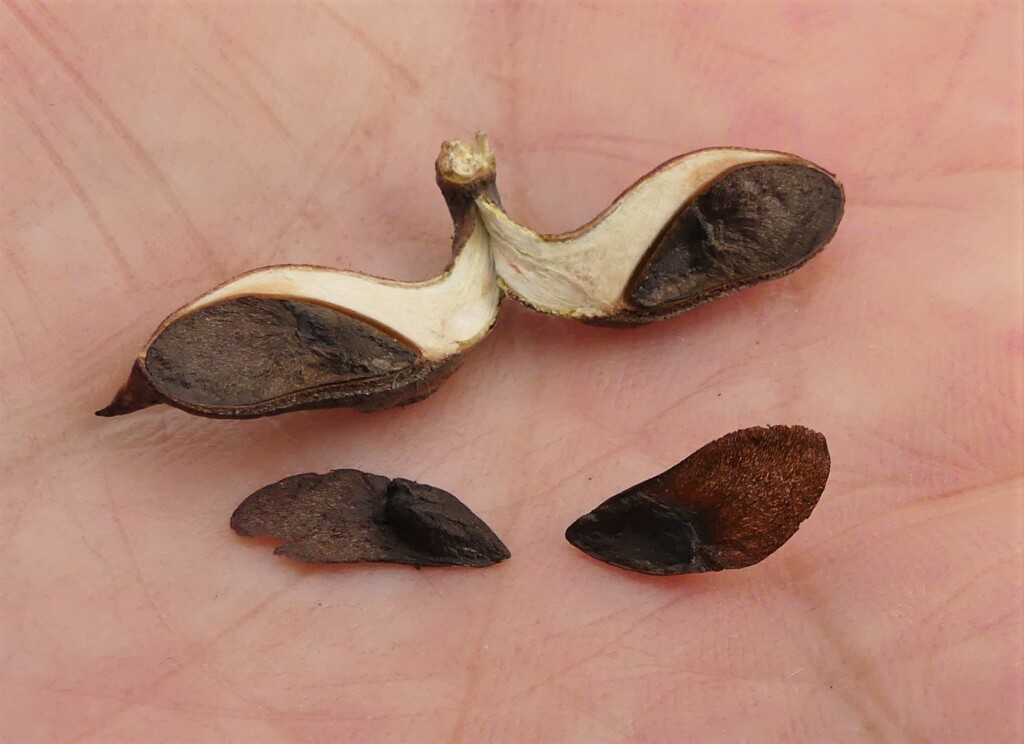Hakea microcarpa
R.Br. Small-fruit HakeaSlender shrub 0.6–2 m high; branchlets and young leaves appressed-pubescent, glabrescent by time of flowering. Leaves terete and/or flat; flat leaves narrowly elliptic, 3–11 cm long, 1.5–3.5 mm broad, rigid, rounded or sometimes terete at apex; terete leaves ascending, 1–14 cm long, 0.9–1.6 mm broad, not grooved, apex straight. Inflorescence 6–12-flowered; rachis 1.5–2 mm long; pedicel 2.5–7 mm long, glabrous; perianth 2.5–3.5 mm long, white, glabrous; pistil 6–9 mm long; pollen presenter an oblique disc. Fruit inserted ± at right-angle to stalk, obliquely ellipsoid, 1.1–1.9 cm long, 0.5–0.9 cm wide, smooth or rugose, horns 2–3 mm long; seed occupying almost whole valve face, obliquely obovate, 7–12 mm long; wing partly down one side, brown. Flowers Sep.–Feb.
LoM, VRiv, MuF, GipP, Gold, CVU, NIS, EGL, EGU, WPro, HSF, HNF, MonT, HFE, VAlp. Also Qld, NSW, ACT, Tas. Locally common in subalpine bogs, along stream-margins or in poorly drained woodlands in the higher subalps, but with disjunct occurrences at lower altitudes along rocky banks of the upper Cann and Genoa Rivers. Historical records from western Victoria are likely to be mislabelled.
There is variation in the wall thickness of the fruits of this species, with some specimens having quite thin-walled fruits and others thicker and woodier fruits. Terete leaves are usually to be found in Victorian populations but flattened leaves may also sometimes occur on the same plant.
Barker, R.M.; Barker, W.R.; Haegi, L. (1996). Hakea. In: Walsh, N.G.; Entwisle, T.J., Flora of Victoria Vol. 3, Dicotyledons Winteraceae to Myrtaceae, pp. 870–882. Inkata Press, Melbourne.
 Spinning
Spinning

